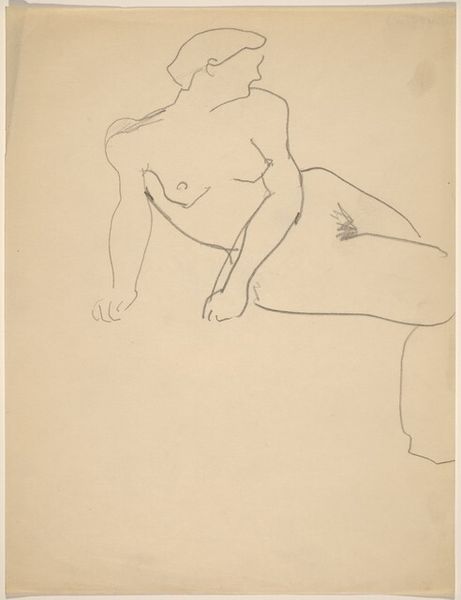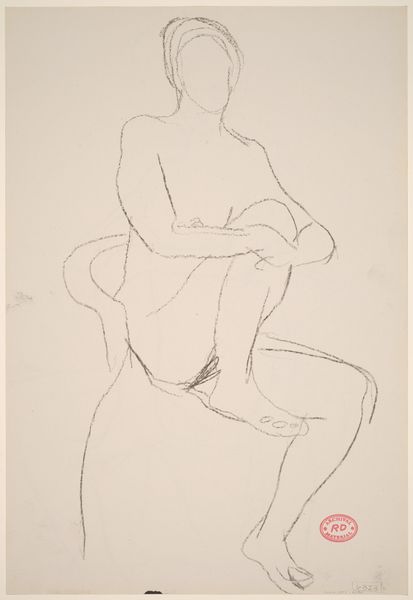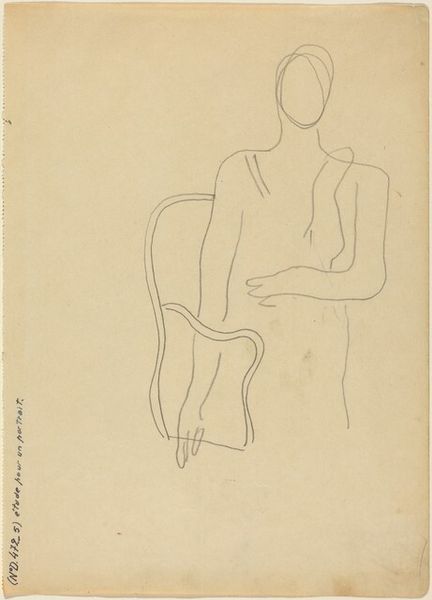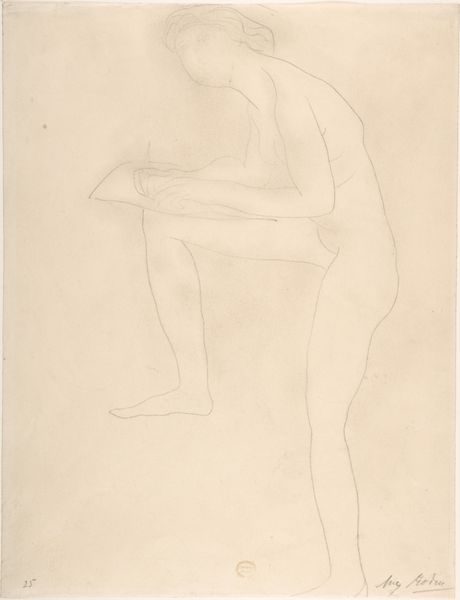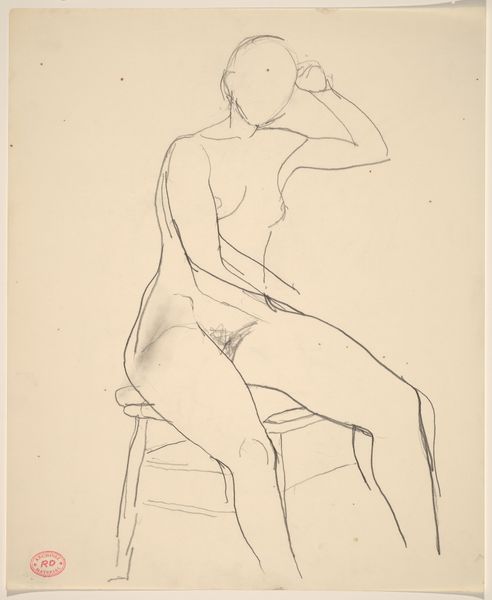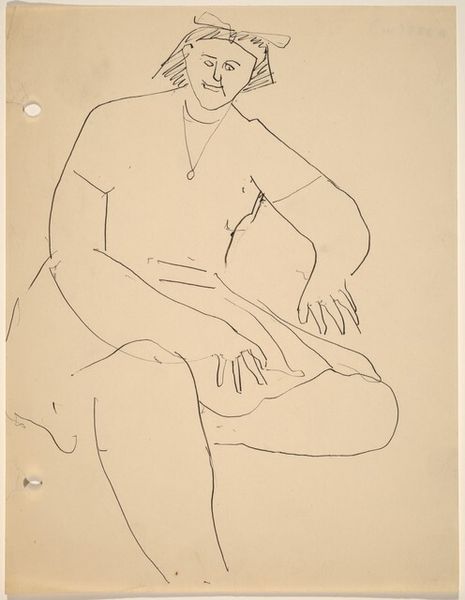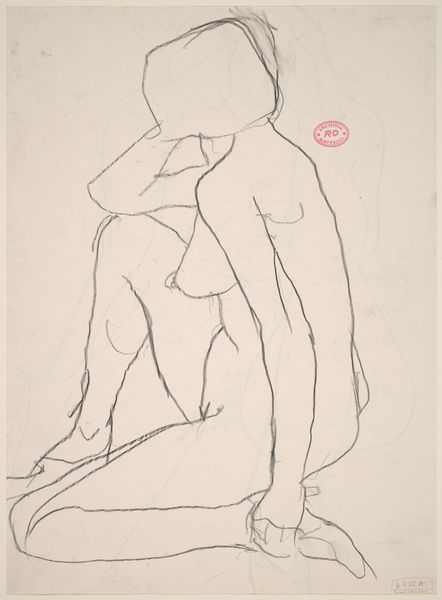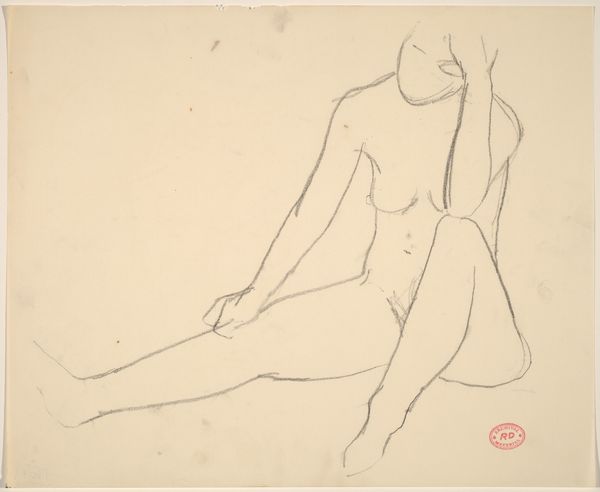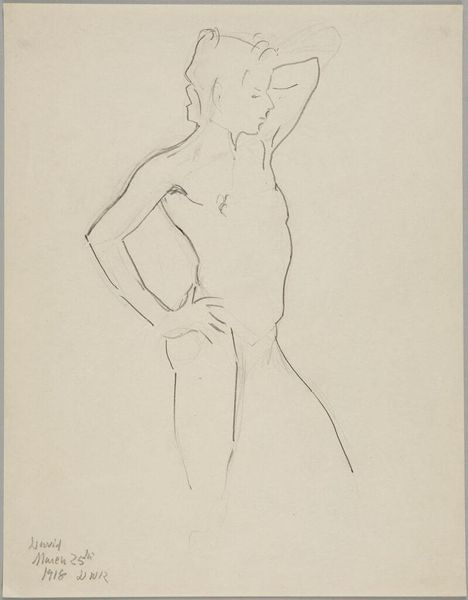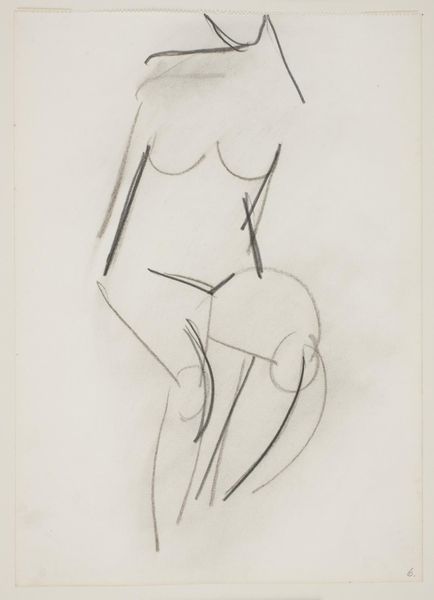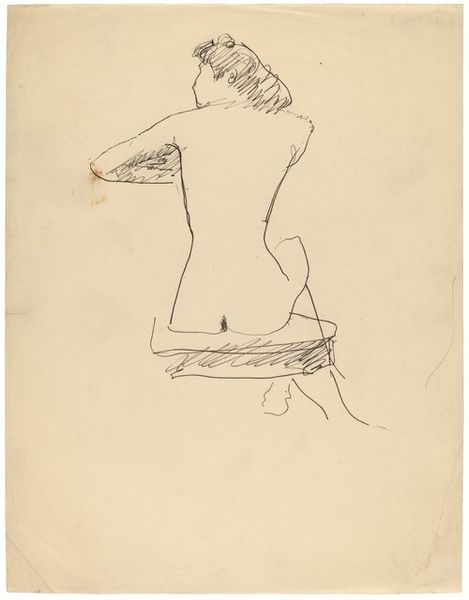
drawing, pencil
#
drawing
#
ink drawing
#
pencil sketch
#
etching
#
figuration
#
pencil
#
academic-art
#
nude
Dimensions: overall: 27.4 x 21.5 cm (10 13/16 x 8 7/16 in.)
Copyright: National Gallery of Art: CC0 1.0
Editor: We’re looking at a pencil drawing by Mark Rothko, “Nude Figure Seen from the Back, Right Arm Supporting Torso.” The lines are delicate, almost hesitant, and it gives the figure a sense of vulnerability. What strikes you about this work? Curator: It's fascinating to see Rothko engage with figuration, particularly given his later commitment to abstraction. In academic art, the nude often objectifies, yet here the facelessness subverts that. Consider the historical context; during this period, artists were grappling with the legacy of classical representation while simultaneously questioning traditional power structures. Does the omission of the face empower the subject by denying a fixed identity, or does it erase individuality? Editor: That's a perspective I hadn't considered. I saw the lack of a face as more of a study of form, but I see your point about subverting the traditional nude. Do you think this drawing might reflect Rothko’s own struggle with representation and identity as a Jewish immigrant in America? Curator: Precisely. This early work, pre-dating his signature color fields, can be interpreted as a negotiation of visibility and invisibility. The nude, historically loaded, becomes a site for exploring themes of alienation, identity, and the complex power dynamics inherent in representation itself. It encourages us to consider whose bodies are historically visible, and under what conditions. What happens when we reclaim that gaze? Editor: It's interesting to think of this seemingly simple drawing as a kind of quiet rebellion against art historical norms. Curator: Absolutely. It reveals that even in the most traditional forms, artists can pose radical questions about selfhood and societal power. Editor: This has totally shifted my perspective. I will never look at another nude the same way again. Curator: And that’s precisely the point: to engage critically and historically. Now imagine how all these considerations pushed him toward the total abstraction he embraced later in his career!
Comments
No comments
Be the first to comment and join the conversation on the ultimate creative platform.
